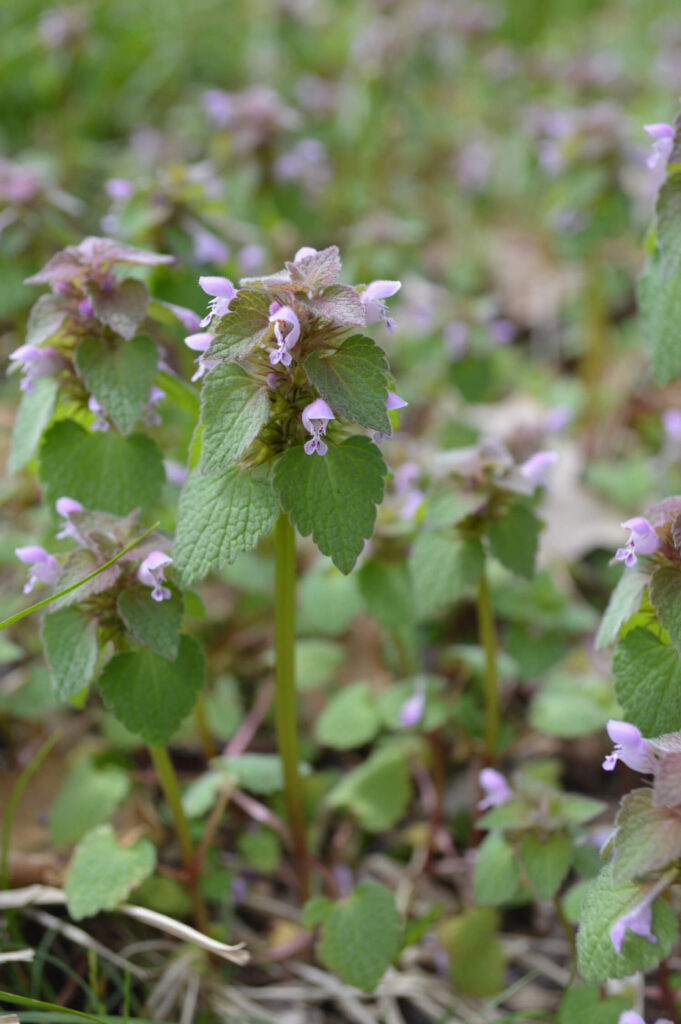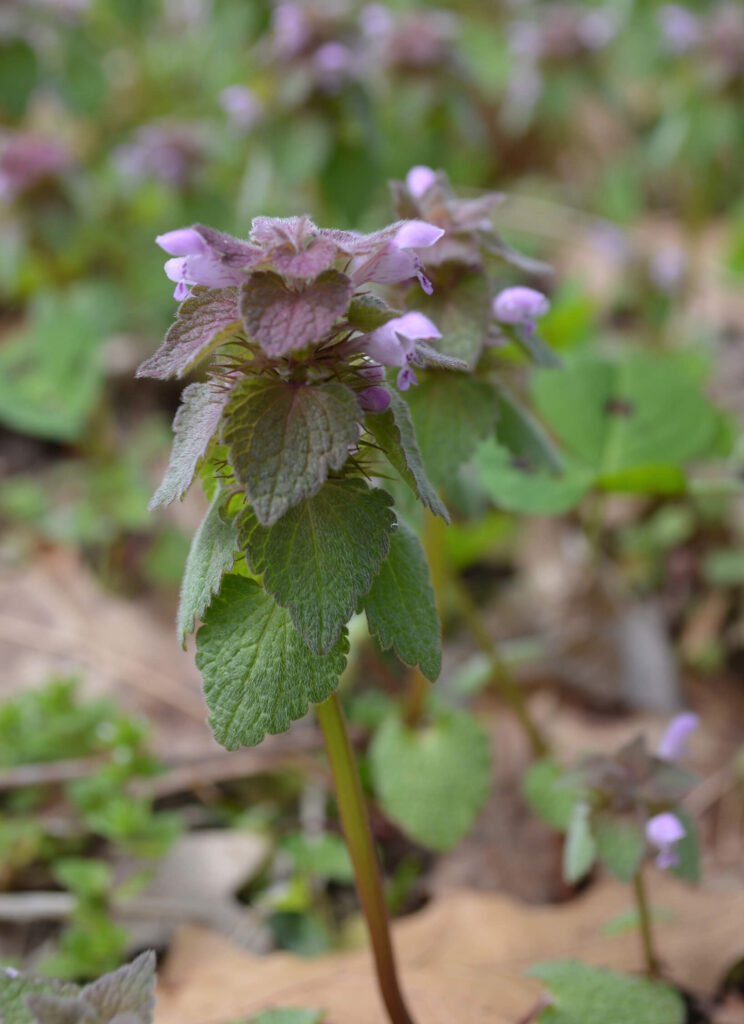A common early spring weed, purple deadnettle (Lamium purpureum) is a member of the mint family and grows in large clumps in lawns and in disturbed fields. Since it starts growing as early as April, it is often the only green (well, purplish green) thing in the lawn. Its tiny flowers serve as an early source of food for bees.
Native to Europe and Asia, this plant is now found throughout the United States and in Canada too. While it is an early grower, it will start to die off as the temperatures begin to rise. You may see it come back again in fall.
I usually just mow these down when they start getting too big or tall or pull them out by the roots in areas where they start to take over. They are annuals but reseed themselves easily.
Another plant in the mint family, henbit (Lamium amplexicaule) is often found growing in the same locations at the same time of year.
Plant Description
The leaves of purple deadnettle are triangular, and a little heart-shaped. They are fuzzy to slightly hairy. The leaves at the top of the plant tend to be maroon or purple/red-colored (hence the name). The stem of the plant is square. Small purple flowers form in whorls at the top of the plant.

Video About Purple Deadnettle and Henbit
This video is from the Clemson university Home and Garden Information Center

